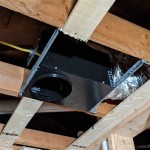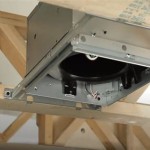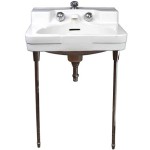Can I Replace My Own Bathroom Vanity?
Bathroom vanities are a focal point in any bathroom, often serving as a statement piece that sets the tone for the space. Whether you're looking to update a dated vanity or simply want a fresh look, replacing it can be a significant home improvement project. While it may seem like a daunting task, with proper planning and execution, replacing a bathroom vanity is a DIY project that many homeowners can tackle successfully.
The feasibility of replacing your own bathroom vanity depends on several factors, including your level of DIY experience, the complexity of the installation, and the specific requirements of your bathroom. This article will explore the key considerations for determining whether you can handle this project yourself.
Assess Your DIY Skills
Replacing a bathroom vanity involves a variety of tasks, ranging from basic plumbing and electrical work to carpentry and finishing. Before embarking on this project, it's essential to honestly assess your DIY skills and comfort level with these tasks. If you're a novice DIYer, you may want to start with simpler projects before tackling a bathroom vanity replacement.
Here are some questions to ask yourself:
- Have you previously worked with plumbing fixtures and connections?
- Are you comfortable working with electrical wiring and outlets?
- Do you have experience with basic carpentry skills such as cutting and assembling wood?
- Are you familiar with the proper use of tools and safety procedures?
If you're unsure about your abilities, it's always wise to err on the side of caution and seek professional assistance. An experienced contractor can ensure the project is completed correctly and safely.
Evaluate the Complexity of the Installation
Not all bathroom vanity installations are created equal. The complexity of the project can vary depending on factors such as:
- Existing plumbing and electrical connections: If your current vanity has simple connections, it may be relatively straightforward to transfer them to the new vanity. However, if you need to reroute plumbing or electrical lines, the project becomes more complex.
- Vanity size and weight: Larger and heavier vanities require more effort to move and install. You may need assistance from another person to lift and secure the vanity in place.
- Countertop material: Some countertop materials, such as stone or solid surface, are more difficult to cut and install than others. You may need specialized tools or professional assistance for these materials.
- Cabinet construction: Prefabricated vanities often come with pre-assembled cabinets, simplifying the installation process. Custom-built vanities require more construction and assembly work.
If you encounter any unforeseen complexities during the project, you may need to call in a professional to complete the work.
Consider Your Bathroom's Specific Requirements
Before you begin the replacement process, carefully consider the specific requirements of your bathroom. This includes factors such as:
- Space constraints: Ensure that the new vanity will fit comfortably in the allocated space, leaving enough room for movement and access.
- Plumbing and electrical codes: Familiarize yourself with local building codes and regulations related to bathroom plumbing and electrical work. Ensure that your new vanity meets these requirements.
- Desired features: Consider the features you want in your new vanity, such as storage options, countertop material, and sink style.
Planning and research are essential to ensure a successful and compliant bathroom vanity replacement project.
Seek Professional Assistance When Necessary
While replacing a bathroom vanity can be a rewarding DIY project, it's important to recognize your limitations. There are situations where seeking professional assistance is recommended, such as:
- Significant plumbing or electrical work: If the project involves major plumbing or electrical modifications, it's best to leave it to a licensed contractor.
- Complex countertop installation: If you're working with delicate or difficult-to-install countertop materials, professional expertise is strongly recommended.
- Structural concerns: If you're replacing a vanity that's attached to a wall with structural issues, a professional inspection and assessment are crucial.
By carefully considering your DIY skills, the complexity of the installation, and your bathroom's requirements, you can determine whether you can confidently replace your bathroom vanity yourself or if you need professional assistance.

11 Low Cost Ways To Replace Or Redo A Hideous Bathroom Vanity Hometalk

Diy Bathroom Vanity 12 Rehabs Bob Vila

How To Install A Bathroom Vanity And Sink

Diy Vanity Tops For Your Bathroom

Diy Bathroom Vanity 12 Rehabs Bob Vila

15 Beautiful Makeover Ideas For A Snazzy Diy Bathroom Vanity

11 Low Cost Ways To Replace Or Redo A Hideous Bathroom Vanity Hometalk

Diy Bathroom Vanity 12 Rehabs Bob Vila
:max_bytes(150000):strip_icc()/athomewithashley-07bb4ab1f6354e50b32cef75d1fba3ec.jpg?strip=all)
25 Diy Bathroom Vanity Ideas Perfect For Storage

How To Replace A Vanity Top And Save Craving Some Creativity
Related Posts







